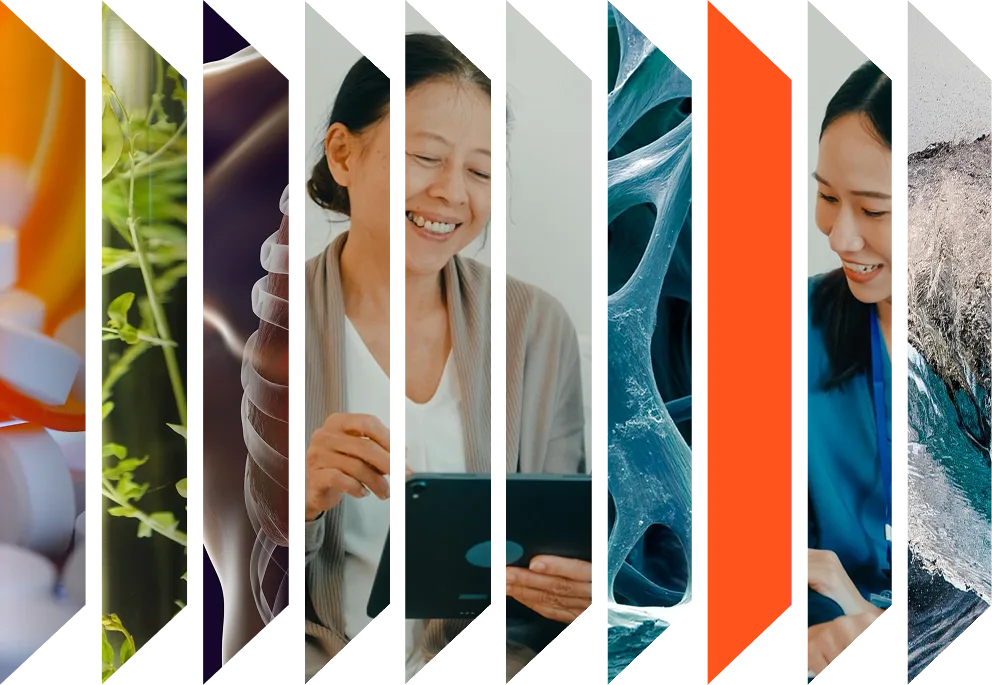让患者积极参与治疗

基于患者偏好分享个性化教育 — 包括语言、阅读水平、格式和教育方式
以患者为中心并承认患者的独特需求,提高患者满意度
为临床医生提供融入其工作流程的循证患者教育
在正确的时间分享正确的信息,帮助临床医生与患者建立信任关系
非常抱歉,我们不完全支持您的浏览器。如果您可以选择,请升级到较新版本或使用 Mozilla Firefox、Microsoft Edge、Google Chrome 或 Safari 14 或更高版本。如果您无法进行此操作且需要支持,请将您的反馈发送给我们。
通过引人入胜的多媒体教育,加强患者对其护理的了解,并帮助做出明智的健康决策。


基于患者偏好分享个性化教育 — 包括语言、阅读水平、格式和教育方式
以患者为中心并承认患者的独特需求,提高患者满意度
为临床医生提供融入其工作流程的循证患者教育
在正确的时间分享正确的信息,帮助临床医生与患者建立信任关系

Advance your patients’ knowledge and ability to self-manage their care through standardized written and video education across the care continuum. By providing accessible health information that meets the unique needs of each patient, your organization can play a central role in advancing health care and health equity to improve:
Patient experience, compliance outcomes, and shared decision making
Regulatory compliance through education
Reliance on emergency care and preventable readmission rates
HCAHPS/CAHPS metrics and reimbursements
Long-term wellness and chronic care management

“我们的愿景是在整个卫生系统中实现标准化,以便我们能够与患者保持联系和互动,无论他们是在我们的设施中还是在家中。在此过程中,我们力求确保所有材料不仅对患者有明确的作用,而且他们也理解这些作用。要实现这一目标,我们知道提高对教育信息的理解和保留将是关键。

Drive content consistency. Ensure patients, caregivers and clinicians use the same evidence-based information across the health system and continuum of care.
Personalize the patient experience. Foster wellness through education personalized for patients’ unique treatment needs, usability and language.
Optimize the clinician workflow. Integrating patient education into your EHR workflow is an efficient way for clinicians to meaningfully connect with patients. Through actionable patient insights, you can monitor usage to measure the effectiveness of your patient engagement technology programs.

Watch now
|
Improves feelings of preparedness and helps reduce anxiety
Strengthens self-management and patient satisfaction
Reduces readmission and postoperative healthcare utilizations
Studies show better learner retention when information is presented in a video format compared to text with illustrations4. In fact, patients with low literacy levels saw a 50% increase in comprehension when using video-based education5. View an example of Elsevier’s Patient Education videos, Managing Your High Blood Pressure.
书面文本讲义、健康教育视频、药物/药物信息表、实验室信息
爱思唯尔的患者教育可以通过多种方式提供支持,以支持您的患者参与计划,包括:
嵌入式书面和视频文档、FHIR、API
所有 FDA 批准和大多数非处方药的病症和疾病说明、健康主题、医疗程序、生活方式改变、实验室测试教育、药物/药物信息以及其他主题
20 种语言
语言、格式和交付方法
我们使用通俗易懂的语言来使健康信息清晰易懂。无论何时何地,医学术语都会被翻译成日常语言,以确保每个人都能轻松理解和使用我们的材料。通俗易懂的语言赋予患者权力,帮助他们自信地做出明智的健康决策。
临床医生可以确认已分配和查看的信息。他们还可以获得患者反馈,因此可以无缝地衡量患者参与度和教育。
可以。爱思唯尔的患者教育内容可以通过多种方式提供,以最好地满足您的组织和患者社区的需求。

Health literacy stat: “Health Literacy in the United States: Enhancing Assessments and Reducing Disparities,” Milken Institute, 2022.
Improved education stat: https://psnet.ahrq.gov/primer/readmissions-and-adverse-events-after-discharge
Title: Effectiveness of video-based health promotion: A systematic review and meta-analysis | Authors: Xizhu Xiao, Rachel Min Wong, Wenyuan Yang | Journal: Patient Education and Counseling Publication Date: February 2024, Volume 119 |DOI: 10.1016/j.pec.2023.108095)